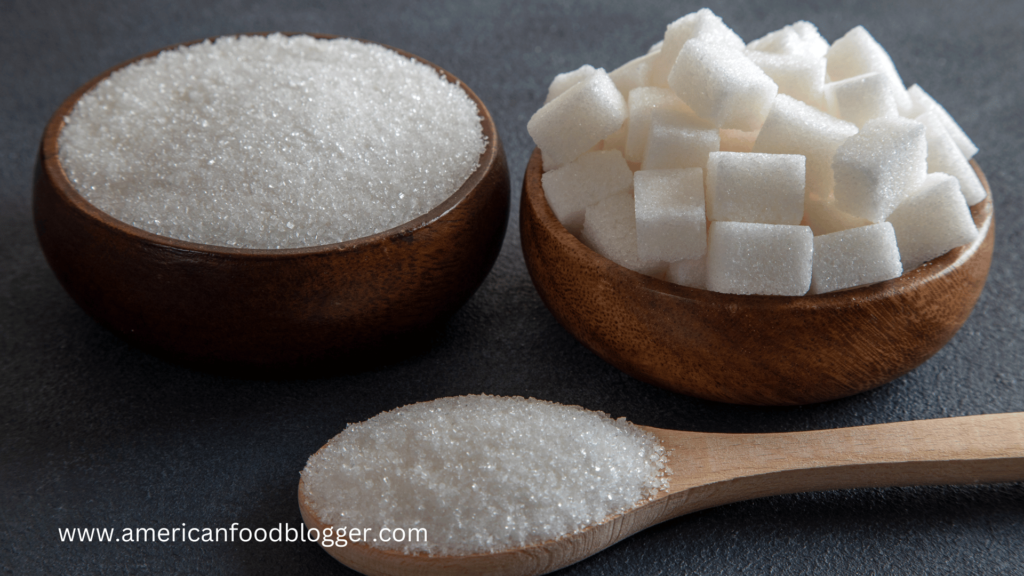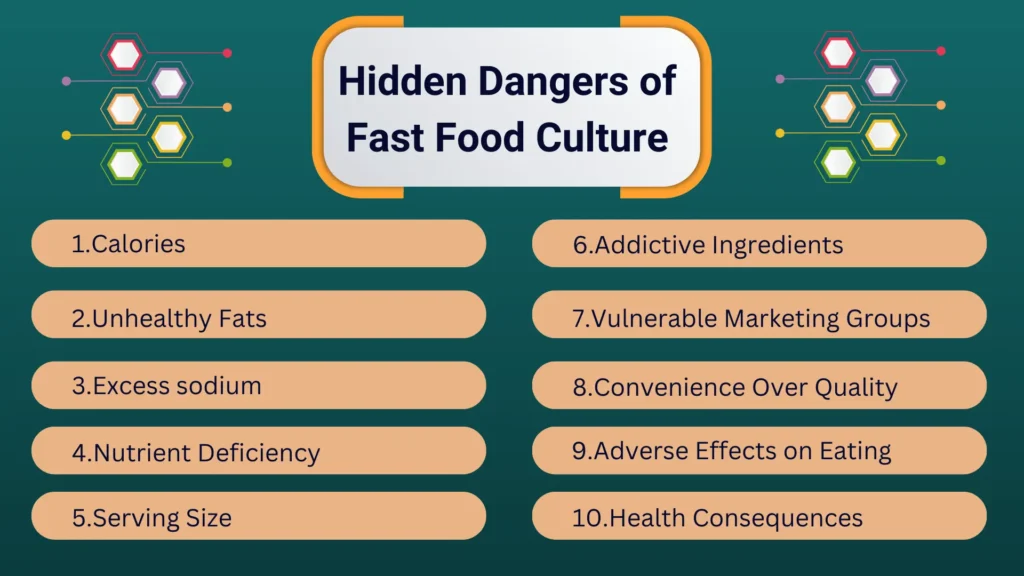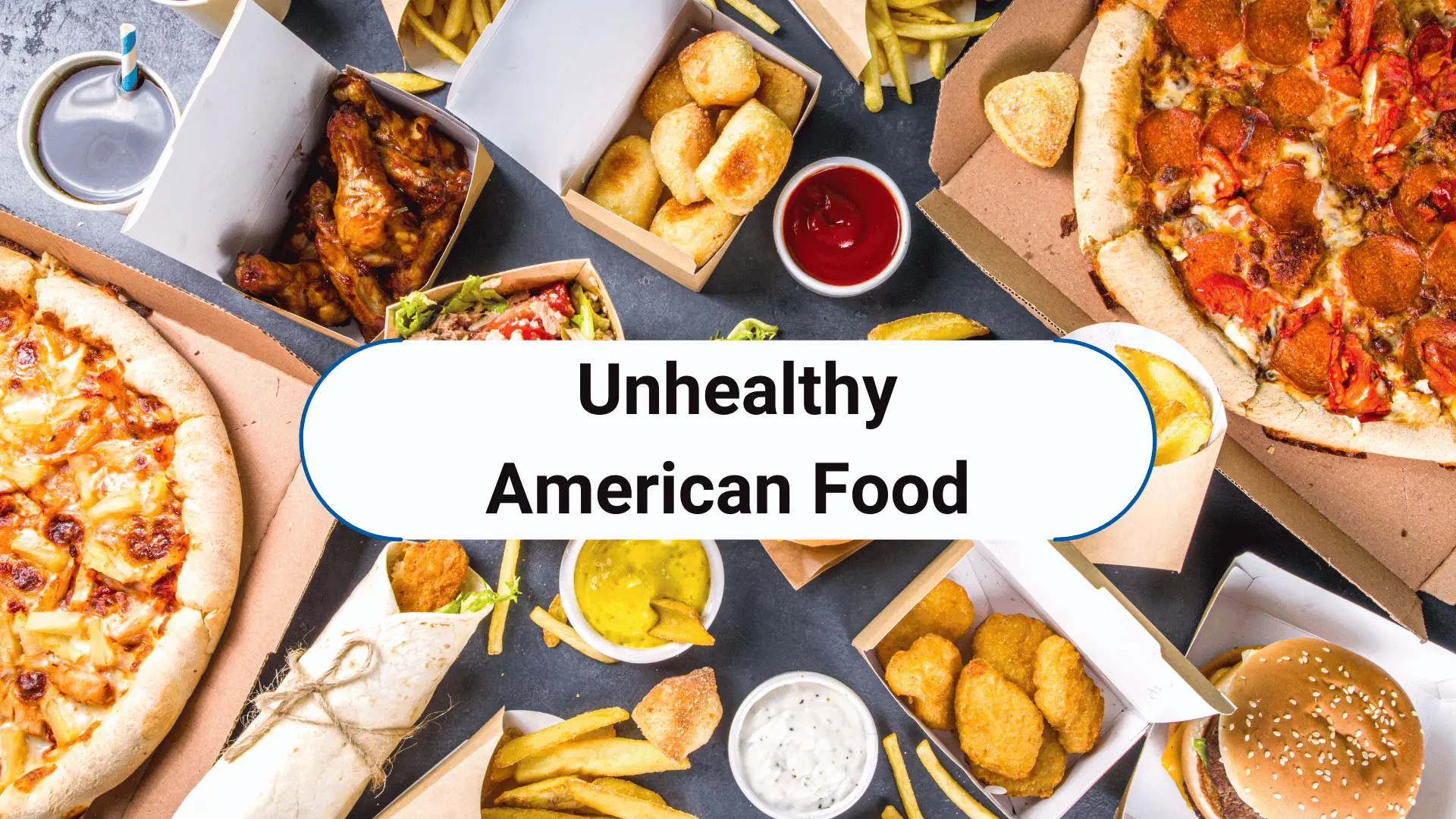The American diet has often been criticized for its unhealthiness which raises the question, Why is American food so unhealthy? The answer is complex, involving factors such as the rise of processed foods and the effects of industrial agriculture. This article examines the key factors behind the American diet’s health challenges, exploring why it has become a growing concern.
The Rise of Processed Foods in American Diet
A significant factor contributing to the unhealthiness of the American diet is the widespread consumption of processed foods. These products, often loaded with chemicals, preservatives and fillers, have become a staple in the typical American diet. Although processed foods are convenient, their long ingredient lists and high levels of unhealthy fats, sugar and salt make them a poor choice for a healthy lifestyle.
Excessive Portion Sizes
American food is unhealthy largely because of its excessive portion sizes, which have become the norm. Whether dining out or cooking at home, Americans often face servings much larger than what their bodies need. This overabundance leads to overeating and contributes to health problems like obesity and heart disease.

Sugar Overload
Sugar is another major factor behind the unhealthiness of American food. The American diet is notorious for its high sugar content with sweetened beverages, snacks and desserts often making up a significant portion of daily calories. This excessive sugar intake contributes not only to weight gain but also to diabetes, dental decay and a range of chronic health conditions.

The Hidden Dangers☠️ of Fast Food Culture in America
1. Calories: Fast foods are calorie-dense, offering lots of calories in a small amount which can lead to overeating and weight gain.
2. Unhealthy Fats: Fast foods are often high in saturated and trans fats which increase the risk of heart disease and obesity.
3. Excess Sodium: Most fast foods have high levels of sodium which can cause hypertension and cardiovascular problems due to water retention and bloating.
4. Nutrient Deficiency: Fast food often lacks essential nutrients like vitamins, minerals and fiber. These meals are high in refined carbs and sugars, which offer little nutrition and can lead to health problems like diabetes.
5. Serving Size: Large portion sizes at fast food restaurants encourage overeating and excess calorie consumption.
6. Addictive Ingredients: Fast foods often contain additives and flavor enhancers that can make them more tempting, leading to cravings for more.
7. Vulnerable Marketing Groups: Fast food companies target children and low-income families with unhealthy food choices.
8. Convenience Over Quality: The ease and accessibility of fast food make it a go-to option but it often lacks nutritional quality.
9. Health Consequences: Regular fast food consumption can lead to long-term health issues like obesity, diabetes and heart disease, putting a burden on public health systems.

High-Calorie and Low-Nutrient Diets
High-calorie, low-nutrient diets are major contributors to the unhealthiness of American food. Most common meals are calorie-dense but lack essential nutrients our bodies need. This imbalance leads to consuming normal amounts of calories with insufficient nutrients for maintaining good health.
Nutrient deficiencies can result in health problems such as weakened immunity, poor bone health and an increased risk of cardiovascular disease and diabetes. Regular consumption of high-calorie, nutrient-poor foods can lead to overeating, weight gain and an increased risk of obesity and related health issues.
Convenience in Unhealthy Choices
Convenience is a significant factor in the prevalence of unhealthy eating habits in the United States. Many people have busy lives and choose pre-packaged and processed foods because they are quick and easy. These convenience foods are often loaded with unhealthy ingredients like refined sugars, saturated fats and sodium, which lack essential nutrients that our bodies need.
While these foods save time and energy, they lead to poor eating habits and can contribute to serious health problems such as obesity, heart disease and diabetes. The widespread availability of unhealthy options makes it more challenging to choose healthier foods.
Additives and Preservatives
The use of additives and preservatives is another reason why American food is so unhealthy. Additives and preservatives are widely used in American food to enhance flavor and extend shelf life but they pose health risks. These chemicals can lead to issues like allergies, digestive problems and even increase the risk of cancer.
Many processed foods contain additives and preservatives, which can contribute to poor nutritional quality and increase the risk of chronic health issues. To improve American diets, it’s important to reduce reliance on these artificial ingredients and focus more on fresh, whole foods.

Impact of Industrial Agriculture on American Food Quality
Industrial agriculture focuses on producing large amounts of food cheaply, often at the cost of nutrition and the environment. It relies heavily on pesticides, hormones and antibiotics to boost crop yields, which raises concerns about food safety.
This focus on quantity often reduces the nutritional quality of food and increases the risk of contamination. Moreover, it harms the environment through soil degradation and water pollution, further affecting the healthiness of American food.
Why Americans Consume Too Much Saturated and Trans Fats
Here are some reasons:
1. Prevalence in Processed Foods: Saturated and trans fats are found in processed foods like cookies, cakes, chips and microwave meals. They improve flavor, texture and shelf life, making them common in convenience foods.
2. Use in Fast Food: Fast foods like fried chicken, burgers and fries are cooked in oils containing high levels of saturated and trans fats. These fats are cheap and make food crispy.
3. Lack of Awareness: Many people still eat saturated and trans fats because of unclear labels or lack of knowledge about their harm to heart health.
4. Addiction to Taste: Saturated and trans fats taste good, causing cravings and making it harder to choose healthier foods.
5. Cultural and Social Factors: Fast food and processed snacks are a big part of American culture, associated with convenience and social gatherings which keeps them popular despite health risks.
6. Limited Regulation: Despite efforts to reduce trans fats, some products still contain them due to weak regulation and loopholes, exposing consumers to these harmful fats.
7. Nutritional Misinformation: Marketing often focuses on taste and convenience without showing the unhealthy effects of saturated and trans fats, misleading consumers.
8. Portion Sizes and Consumption Patterns: Large portions and frequent fast food lead to excessive unhealthy fat intake, contributing to poor health over time.
9. Lack of Alternative Options: Limited access to healthy foods in low-income areas forces reliance on processed and fast foods, worsening health issues from saturated and trans fats.

Sedentary Lifestyles and Their Role Unhealthy Eating Habits
Sedentary lifestyles significantly contribute to why American food is often regarded as unhealthy. Poor eating habits combined with limited physical activity create serious health risks. For instance, about 25% of Americans don’t get exercise outside of work and spend much of their time sitting at desks or in front of screens.
This lack of physical activity can lead to weight gain, increased risk of chronic diseases and other health problems. Without regular exercise to counterbalance unhealthy diets, the negative effects only worsen.
Conclusion
The unhealthiness of American food is a complex issue driven by the rise of processed foods, oversized portions, fast food dominance, the influence of the food industry and inadequate nutritional education.
Addressing these challenges requires a shift toward whole, unprocessed foods, including fruits, vegetables, whole grains, lean proteins and healthy fats. Cooking at home can help control ingredients and portion sizes. Reducing sugary foods and prioritizing locally grown or organic options also fosters better health. By adopting these changes, Americans can move toward healthier eating habits and improved overall well-being.
💡Related Queries:
1.What are the most spiciest foods in the world?
2.What Are the Most Disliked Foods in America?
4.What are the Best American Foods?
5.9 Of The Worst Processed Foods
Frequently Asked Questions:
➤ What makes American food unhealthy?
Answer: American food is often high in processed ingredients, added sugars, unhealthy fats and excessive portion sizes, which contribute to various health issues.
➤ Why are portion sizes in America so large?
Answer: Portion sizes are large because of cultural habits, marketing tactics and the idea that bigger servings mean better value, causing people to eat more calories.
➤ How does the fast food culture contribute to unhealthy eating habits in America?
Answer: Fast food is typically high in calories, unhealthy fats and sodium. Its convenience and low cost make it a popular choice, leading to poor eating habits.
➤ What role do additives and preservatives play in the unhealthiness of American food?
Answer: Additives and preservatives improve flavor, appearance and shelf life but may lead to health issues like obesity and heart disease.
➤ Is American food unhealthy because of its sugar content?
Answer: Yes, many American foods, especially processed and packaged items, contain high amounts of added sugar, which increases the risk of diabetes, obesity and other health problems.
➤ How does industrial agriculture impact the quality of American food?
Answer: Industrial agriculture focuses on quantity over quality, producing calorie-rich but nutrient-poor foods.
➤ Can American food be made healthier?
Answer: Yes, eating whole foods, controlling portions, cutting added sugar and unhealthy fats, and cooking at home can improve American diets.








5 Comments